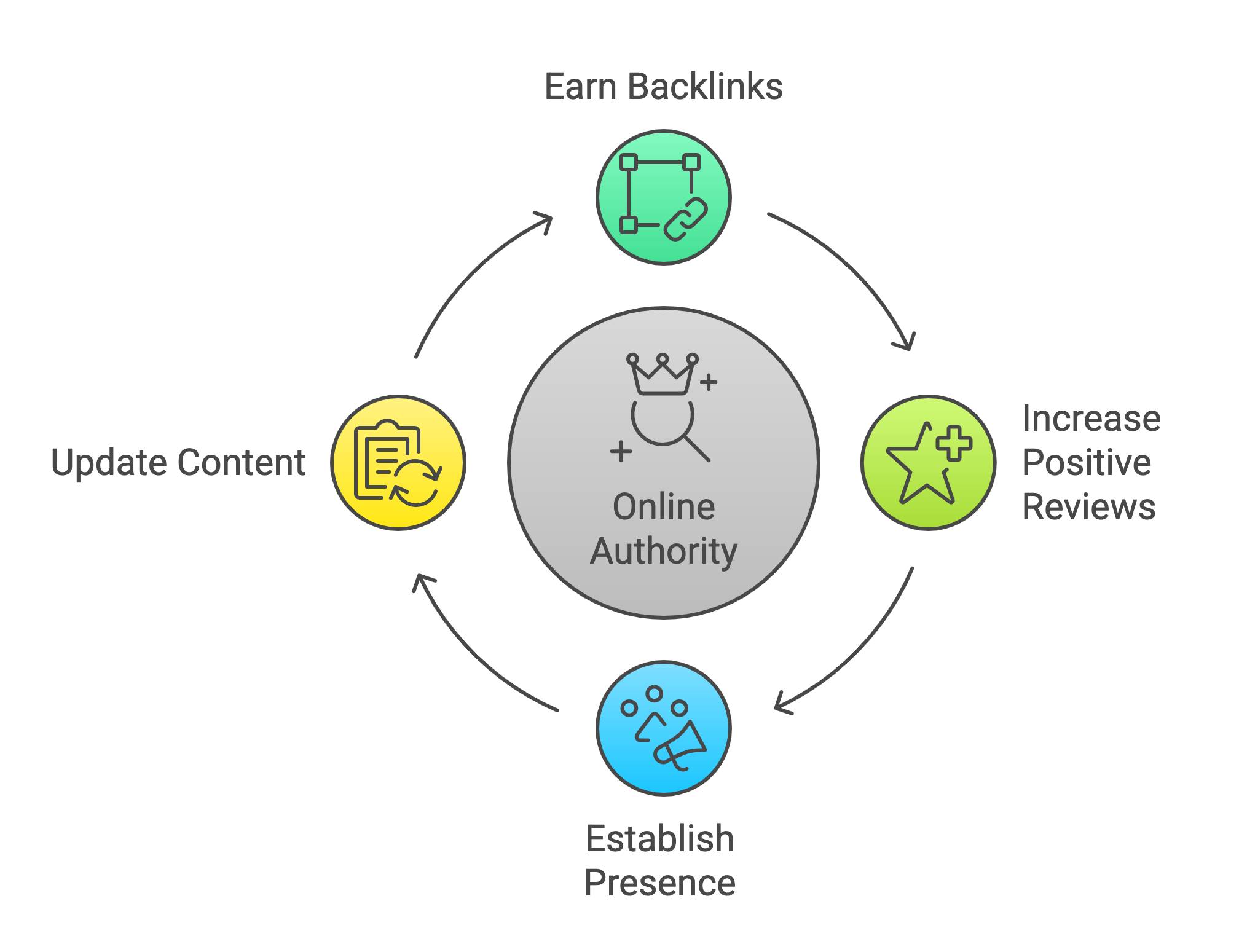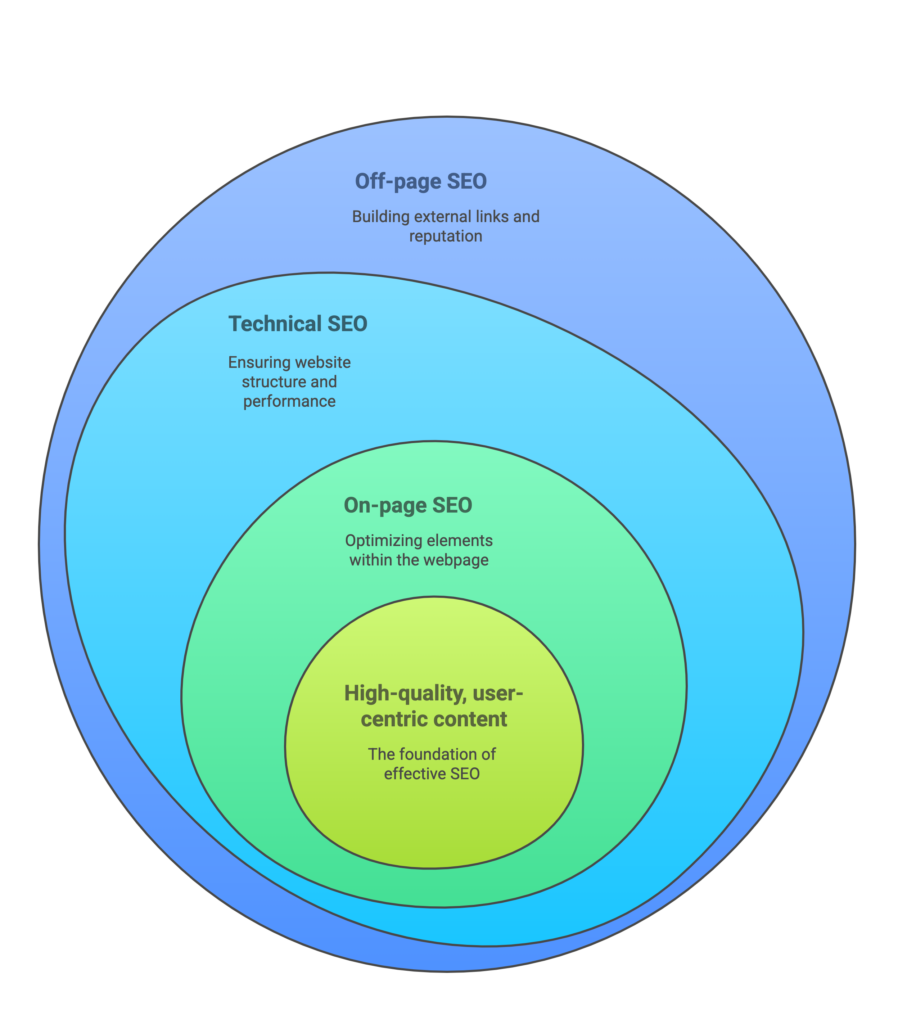What is SEO in 2025 [Learn How AI & Generative Search Are Changing the Game]
This article is for business owners, digital marketers, and SEO professionals who want to stay ahead of the rapidly evolving digital landscape in 2025. With AI and generative search reshaping how content is discovered and consumed, traditional SEO practices need updating. This guide addresses critical pain points such as declining click-through rates and adapting to Google’s AI-driven search results. It outlines key strategies, including optimizing content for both users and algorithms, leveraging structured data, and building trust online. Read on to ensure your SEO strategy remains effective and competitive in the age of AI.

Chris Raulf
Chief Executive Officer / Founder
In This Story
More than 67% of businesses today use AI to support their SEO and digital marketing efforts. They’re leveraging it to find deeper insights in data, automate repetitive tasks, and improve search engine rankings faster. But AI isn’t just impacting how marketers target consumers; it’s changing how consumers search for content — and rapidly.
In 2024, Google dropped below a 90% share of the global search engine market for the first time since 2015. It’s losing users to social media platforms and large language models (LLMs) like ChatGPT. In response, Google has updated its results page to feature an AI overview of answers. Now, almost 60% of Google searches end without a click — reflecting that more users are getting their answers directly on the search page.
Search engine optimization has become the art and science of optimizing your online presence to thrive in AI-driven search ecosystems. This guide details the top strategies and best practices for achieving that goal, informed by Boulder SEO Marketing’s years of targeted SEO experience.
Keep reading to learn how to adapt your strategy for success in the new age of SEO, and consider bookmarking this page for future updates as AI continues to evolve quickly. We also host regular AI and SEO webinars, so sign up for an upcoming webinar if you prefer to learn through video.
So, what is search engine optimization in 205? Let’s get into it.
Why Fundamental SEO Still Matters (Even With AI)
First, it’s important to recognize that AI isn’t changing everything about SEO. The fundamentals still matter, especially:
- Creating high-quality, user-centric content: Google prioritizes this even more in its latest SEO updates
- On-page SEO: The process of optimizing web pages to improve SEO placements
- Technical SEO: Leveraging performance upgrades to improve site rankings
- Off-page SEO: Activities you perform off of your website to improve its placements, including building backlinks and social media engagement

AI-Powered On-Page SEO: Optimizing Content for Users and Algorithms
On-page SEO is the practice of optimizing individual web pages for higher Google rankings. Marketing teams are starting to use AI to do this more efficiently and effectively, as detailed under the following subheadings.
- Keyword Research
First, AI has changed how Google analyzes and prioritizes content. In the past, you needed to create content featuring keywords that exactly matched what users typed. Now, Google increasingly emphasizes semantic searches, broad topics, and user intent.
The key takeaway is that exactly matching keywords won’t be enough to make your content rank highly moving forward. For the best results, you’ll need to leverage AI tools to create content that aligns more closely with the broad user intent behind the keyword.
- Content Creation
It’s possible to create content entirely with AI today. But doing so will hurt your SEO performance. Google is increasingly emphasizing human expertise and first-hand experience in its results. There’s even an acronym for the shift, E-E-A-T, which stands for Experience, Expertise, Authority, and Trust.
These are the factors that you should build content around to achieve the best rankings. Leveraging your unique expertise and background will improve your SEO results — even if you miss a few keywords here and there. The most important consideration moving forward is whether your content demonstrates mastery of its subject.
- Optimizing Elements
As search practices evolve, you’ll need to optimize on-page elements for human and AI understanding. This means creating titles, meta descriptions, and headers that appeal to algorithms and humans to keep click-through rates high.
AI tools can help you do this. You can leverage them to keep your elements highly aligned with user search intent while optimizing for AI-focused crawling. These tools reduce manual trial-and-error to help your company reach its best results faster.
- The Role of Structured Data and Schema Markups
Schema markups are another essential element of on-page SEO in the age of AI. Including them helps AI bots understand and categorize your content more effectively, which can improve SEO results.
If you’re unfamiliar with schema markups, they are a kind of data you can add to your site that helps crawl bots understand website content and how individual pages relate to one another. For instance, adding the schema “Article” to a blog post will help AI understand the educational intent of the page.
You can use Google’s structured data markup helper to get started. But your strategy may need to change over time as AI continues evolving.
Off-Page SEO in 2025: Earning Trust and Visibility Beyond Your Website
Off-page SEO tells Google how valuable your website is to other users. Remember E-E-A-T? The last two letters stand for authoritativeness and trust. If your off-page SEO is strong, you’ll score highly in those two categories. This can increase your rankings substantially — even if the rest of your content remains the same.
So, how do you earn trust in the new age of SEO? Once again, the core strategies are essentially the same, but you’ll need to adapt how you target them to account for the growth of AI.
- Link-Building
When another website links to one of your pages, Google views that as a vote of confidence in its content. This is why link-building has been an essential part of SEO marketing since its origins. The more high-quality links a page gets, the higher Google will rank it (all other things being equal).
Links still matter. But they’re playing a reduced role in Google’s process for ranking a site’s trustworthiness. The search engine’s AI features now probe a site’s credibility based on factors like brand signals and user engagement, which are harder to game.
For marketers, the takeaway is to focus on high-quality, relevant links that demonstrate expertise — not volume. In the new age of SEO, a single high-quality backlink can replace dozens of votes of confidence from less recognizable sites.
-
Brand-Building
As link-building declines in SEO importance, brand-building is stepping in to take its place. Google’s new algorithm looks at brand signals to evaluate the authoritativeness and trustworthiness of your content. These include:
- Mentions on social platforms and other websites
- Online reputation
- Public reviews
So, part of achieving your SEO goals today is establishing a good reputation for your brand online. That means soliciting positive reviews, engaging with customers and companies on social media, and doing your best to avoid negative mentions online.
-
Community & Forums
Forums are another pathway to improving your site’s trustworthiness. These are online communities where users go to provide unfiltered opinions on specific topics. Building a presence for your brand on these sites can increase authority, boost visibility, and help you understand user queries more practically.
One way to get started is by posting comments on threads related to your area of expertise. For instance, a law school admissions agency might answer questions about an upcoming admissions cycle in a Reddit community for applicants. If the answers are valuable and unbiased, the agency’s reputation will improve over time, earning more mentions and links on the forum. This would increase the agency’s trust ranking for its SEO goals.
If you’d like to leverage this strategy, be careful of coming across as purely promotional. People use forums to find unbiased opinions from other users. If your comments only hype up your products, it could increase negative mentions and decrease your brand’s online reputation.

Technical SEO for AI: Ensuring Your Site Is Crawlable, Indexable & Fast
Technical SEO is about making your site easy for search engines to crawl and index. It also plays a role in user experience. For example, a site that’s slow to load or not responsive to mobile may have a higher bounce rate, which Google can interpret negatively for SEO rankings.
AI has changed some aspects of technical SEO while leaving others essentially the same. For example, using a logical site structure with schema markups has become more critical as AI crawlers proliferate. These tools make it easier for AI to understand and index your content.
On the other hand, website speed has always been a critical part of technical SEO, and it remains that way in the age of AI. The same is true for mobile-friendliness and security. If you already have strategies for optimizing these components in place, you may not even need to update them to account for the growth of AI.
However, technical SEO best practices may evolve as AI changes how people use the internet. That makes benchmarking a smart strategy. You can compare your site’s technical SEO elements to competitors and watch how results change over time. If you ever start slipping, that’s a sign that some element of technical SEO is changing, and it’s time to adapt.
Understanding and Adapting to Generative Search and AI Overviews
Generative search is where AI has had the most significant impact on SEO so far. It’s changing how users engage with Google search results and decreasing click-through rates for many pages. Here’s what you need to know to turn generative search into a competitive advantage in your SEO strategy.
-
The Growing Importance of AI Overviews
Generative search uses large language models to create instant answers to users’ search queries. These AI overviews are becoming more popular amongst users because they provide answers without the extra steps of going to a website and searching for the right paragraph.
AI overviews often contain everything the searcher cares to know about a topic, so they don’t click on any web pages to learn more. This has decreased click-through rates for most sites not featured in the AI answer.
Given the convenience of generative search, it’s likely to become more popular over time. The question for your brand is how to get featured in these answers. If Google pulls an answer from one of your web pages, it’ll earn a valuable link in the AI overview, which can help you leverage this growing search tool to bring users back to your site.
-
Strategies for Getting Featured
AI overviews are still in their early growth phase, which means the best strategies for getting featured may evolve rapidly. However, some of today’s best practices include:
- Creating content designed around core user intent
- Structuring pages to make them easier for AI to understand and interpret as relevant
- Using long-tail keywords to address more specific questions from users, which can make it easier to get featured as a growing website
- Writing with clear, active language and descriptive words to mimic the way humans seek information
- Refining your content over time based on the AI overview results you get
- Increasing your brand’s trustworthiness and authority
-
Becoming The Authoritative Source AI Wants To Cite
To get featured in AI overviews, you’ll need to share valuable, user-centric content that’s structured clearly. But that’s only part of the job. Google also prioritizes content from brands it deems trustworthy. So, you’ll need to improve your brand’s authority to get the best results. You can do that by:
- Earning more backlinks from other reputable sites
- Increasing the number of positive reviews you have on third-party platforms
- Establishing more of a presence on forums and social media sites
- Consistently updating your content to reflect the latest stats and approaches
For a closer about the importance of Generative Engine Optimization (GEO) make sure to read a blog post on our website entitled "Step Aside, SEO: Generative Engine Optimization (GEO) Is Here."

Peeking Ahead: Future Trends Shaping SEO
SEO is evolving rapidly, so it’s important to watch for emerging trends as you work toward your goals. We’ll continue updating the list below to keep you informed. Consider bookmarking this page to stay up-to-date, and keep reading to learn more.
-
The Continuing Evolution of AI
First, you should watch how AI continues reshaping the SEO industry. It may force you to update your strategies over time.
For example, semantic search is becoming more critical as AI improves. Instead of prioritizing content with the right keywords, Google is beginning to prioritize the content that best matches the intent behind a user’s search. So, as time goes on, you may need to spend less time focusing on keywords and more time on creating truly valuable content for users.
Another trend to consider is the growth of conversational AI. Users are starting to research through conversations with LLMs like ChatGPT, Google Gemini, Claude or Perplexity. You can still get your web page featured in those conversational searches, but you may need to adjust your target keywords to reflect more natural language.
-
Ongoing Shifts in User Behavior
It’s also important to watch how user search behavior evolves over time. Today, we’re paying attention to the growth of voice search through tools like Siri. When people research by talking instead of typing, it can impact how you need to structure content to thrive.
We’re also watching the ongoing growth of visual search, which is especially popular with younger generations. This means uploading an image to a search site to find visually similar products, places, and people. As this becomes more prominent, displaying the right images could become integral to succeeding with your content.
-
Impact of Other Technology
Other emerging types of technology could also grow to impact your SEO efforts. For example, Web3 and the metaverse were popular trends just a few years ago. They could reemerge and change where people do research online. But that’s just one example. We may not even be aware of the most important emerging tech for SEO over the next decade, so watch the space to stay informed.
-
The Enduring Importance of Adaptability
Ultimately, maintaining adaptability is a critical goal for keeping pace with the future of SEO marketing. The industry is changing rapidly. This can either help or harm your SEO efforts, depending on how much adaptability your company retains.
For example, five years from now, you may discover that visual search makes up a growing percentage of the traffic you want to capture. If you can’t shift your strategy to accommodate that change quickly, you may lose out to competitors who can.
The key here is not locking yourself into anything. Just because a strategy works today doesn’t mean you can plan on committing to it for the next decade. The companies that are most effective at SEO are often those that find and target the right trends the fastest.
How We Succeed: Boulder SEO Marketing’s Micro SEO and AI-Powered Strategies
More businesses than ever are competing to achieve the best SEO rankings in their industries. This makes it difficult for small and medium-sized businesses to gain traction on search pages with the most traffic. That’s why we’ve created a unique strategy at Boulder SEO Marketing called Micro SEO, which is powered by AI.
Micro SEO is a laser-focused content marketing and SEO strategy designed to achieve results quickly. Instead of rebuilding your entire SEO strategy at once, we identify specific pages with immediate potential for improved rankings. Think of these pages as low-hanging fruit that need a little polish to shine.
We leverage AI to pinpoint the pages and keywords with the most potential for improvement. Then, we optimize these pages by improving structure and relevance to search engines while enriching content for users. Plus, we create a network of related content and links to boost authority and help your brand follow the all-important E-E-A-T guidelines.
For example, you might have a page ranked 10th on Google today that has the potential to get featured in AI overviews. We’d use Micro SEO to analyze where the page can improve, make the necessary changes, and optimize for better rankings. This gives you much faster results than trying to rebuild your SEO strategy from the ground up.
Ready to leverage targeted Micro SEO and AI for your business growth? Schedule your free, no-strings-attached consultation today.
Take Control of Your SEO Future Today
SEO is evolving rapidly in the age of artificial intelligence. Fundamentals still matter, but users are researching in new ways, and your SEO strategy should reflect that. For most brands, that means restructuring content to appeal to AI crawl bots without sacrificing content value for humans. It’s a delicate balance, but not one you need to achieve on your own.
A reliable partner like Boulder SEO Marketing can help your brand make the changes it needs to remain competitive. We’ll continue updating this guide to keep you up-to-date with the latest trends, so be sure to bookmark it. But getting personalized help with your SEO goals can help you make the progress you want faster.
Don’t wait for the competition to outpace you. Book a free, no-strings-attached SEO consultation today to learn more about how BSM can transform your digital presence.
